
Here is an excellent article written by J Jamison Starbuck ND, who is a naturopathic physician in family practice and a lecturer at the University of Montana, both in Missoula. She is past president of the American Association of Naturopathic Physicians and a contributing editor to The Alternative Advisor: The Complete Guide to Natural Therapies and Alternative Treatments.
7 Herbs for Women
"Like billowing clouds, Like the incessant gurgle of the brook The longing of the spirit can never be stilled."
- Hildegard von Bingen
In an unfortunate reversal of historic convention, most modern women are now starved for trustworthy healthcare information, and for recapturing an active role in their families', and their own, health.
Prior to the mid-20th century, women, throughout time, have tended to the health needs of families, children, other women, and whole villages. In their roles as the keepers of medical wisdom, women have relied on science, natural history, observation, experience, and tradition.
The role of healer was naturally assumed by women; such healers included biological mothers, neighborhood "grandmothers," village elders, and renowned physicians and herbalists. The role of medical "expert" served to empower women, to bestow self-esteem, and to grant an automatic place of authority in family and culture.
One of my favorite women healers is Hildegard von Bingen, a multi-faceted woman who lived during the 12th century. Born in Germany in 1098, the lOth child of a noble family, Hildegard was tithed, as per medieval custom, to the church at birth. At age 8, she was sent to a Benedictine nunnery where she spent her days in a tiny room, studying under the tutelage of a female ascetic named Jetta. When Hildegard was 38, Jetta died, leaving Hildegard to become the head of the convent that had grown up around Jetta.
At 42, Hildegard began to have visions, described as "a blinding light of exceptional brilliance flowing through her brain." The then-Pope, Eugenius, encouraged Hildegard to transcribe these visions and to distribute her writings. In the highly religious Europe of the Middle Ages, Hildegard became a famous woman.
Hildegard was also a composer of music, a playwright, and the author of several books, among them Liber Subtilatum, "The Book of Subtleties of the Diverse Nature of Things." Hildegard studied plants, trees, animals, birds, and human behavior. Liber Subtilatum was a treatise on natural history and the therapeutic powers of natural substances.
Hildegard's views stemmed from the Greek four-element theory, a concept which is based on: fire, air, water, and earth. These elements correspond to four respective qualities: heat, dryness, moisture, and cold, and to four respective humors: choler (choleric), blood (sanguine), phlegm (phlegmatic), and black bile (melancholy).
As with other medical practitioners of her time, Hildegard believed that illness stemmed from an imbalance in humors and elements; prescribing the plant, animal, or natural substance which would correct the imbalance was the way to restore health.
Centuries later, Maude Grieve added her version of female wisdom to herbal history with a book entitled A Modern Herbal. For anyone interested in plant medicine and cultural history, this book is a great read.
Grieve clearly loves and respects the plant world; her book, published in England, in 1910, is more than a perfunctory listing of botanical names and their medicinal values. Through funny stories, poetry, Shakespeare, and history, Grieve relates information on over 100 botanical species: their history, cultivation, and culinary and medicinal uses.
Modern-day "representations" of Hildegard von Bingen and Maude Grieve came into my life during my four years of medical school. During the 1980s, Cascade Anderson Geller and Selena Heron taught botanical medicine at each of the two naturopathic medical schools I attended. Since work as a licensed naturopathic physician requires a comfortable familiarity with plants, "herb walks" with either Cascade or Selena were a prerequisite to graduation.
These strolls through the woods and mountains of the Pacific Northwest were unlike any hike I had ever before experienced. Rain or shine (and, in the Northwest, mostly rain) we would set out, tiny plastic bags and small knives in hand. Like contemporary Hildegards, these women would point out, sniff, nibble on, and tell stories about almost every plant we encountered.
We rubbed up against nettles to experience the sting, then chewed plantain leaves and rubbed them onto the rash to observe a cure. We sampled dandelion root, split open juniper berries, touched mullein leaves, and pressed St. John's wort flowers between our fingers to see them stain red. With these women, I learned the "magic" of plant medicine, and, through them, the healing powers of the natural world became real.
Unfortunately, for most women, the past 50 years has been a steady robbing of the traditional role of woman as healer. Modern medicine, pharmaceuticals, surgery, and highly technological procedures have convinced many that the solutions to illness lie outside of ourselves or are beyond the ken of the women we know.
Today, when a baby is due, few parents call a neighborhood midwife; when a child is sick, mothers rarely open kitchen cabinets to brew up the indicated medicine; when menopause begins, only a smattering of women look inward, or to one another, for solutions to hot flashes, depression, or a declining libido.
The pattern, instead, has been to search for answers in a surgical procedure or in eradicating symptoms with a pill - most notably, for women, with estrogen. This drug, derived quite often from the urine of pregnant, often illkept, horses, has been prescribed by physicians with astonishing frequency to treat women with everything from adolescent uterine pain to menopausal hot flashes in the middle-age years to heart disease in the elderly.
In the past months, estrogen, as a medicinal solution, has found itself on shaky ground. To start with, studies have linked the drug with an increased incidence of cancer. In August 1998, the Journal of the American Medical Association published a study concluding that estrogen was not helpful in reducing heart attacks, angina, strokes, and cardiovascular and other vascular-related diseases in menopausal women. In fact, in this study of 2,763 women who had pre-existing heart disease, those who took estrogen/progestin replacement had a higher rate of blood-clotting episodes and gallbladder disease than did those taking a placebo.
Women are rejecting the faulty model which holds the various stages of menopause to be "a disease," which needs to be "treated." Women recognize that there are natural changes which occur, some of which are more tolerable than others. The less-tolerable symptoms can be gently reduced by herbal and dietary approaches.
No more `pharmaceutical shock-treatment.'
More than at any previous time, women are, rightfully, desperate for natural alternatives to what BN's editor, James Gormley, calls the "pharmaceutical shock-treatment of choice": hormone replacement therapy/estrogen replacement therapy.
The `hormone therapy' shock-treatment predisposes women to:
1) increased incidence of breast cancer;
2) increased incidence of ovarian cancer;
3) increased incidence of thromboembolic episodes, like stroke and heart attacks;
4) increased incidence of uterine fibroids;
5) irregular bleeding;
6) PMS-like symptoms;
7) increased incidence of migraine headaches.
With such a stalwart agent of women's healthcare now suspect, women are forced to make alternate choices. In realizing that pharmaceuticals do not hold all the answers, women may decide to reclaim their inherent wisdom about the body and about healing.
While no one advocates a return to "primitive" medical practices, many women recognize that the natural world does, in fact, offer safe and effective methods for achieving health. One of these methods is herbal medicine.
Herbs of choice for women's health needs
1. Black cohosh (Cimicifuga racemosa) was first used in the United States in the mid-1800s, introduced by John King, an Eclectic physician and author. Extracts made from the dried root of this herb were used to treat the cramps and rheumatic back pain common to the first few days of menstruation. Recent research has found that black cohosh acts as a phytoestrogen (botanical with estrogen-like properties), which has proved effective in relieving hot flashes and vaginal dryness, and potentially blocking the entry of undesirable estrogens into sensitive cell membranes. In some menopausal women, black cohosh also has the very nice effect of livening up a waning libido.
2. Red clover (Trifolium pratense) is rich in phytoestrogens, including formononetin and coumestrol, which is among the most powerful of the plant estrogens. Red clover has been shown to relieve hot flashes and menstrual cramps, and to alleviate ovarian cysts. Like black cohosh, red clover has been reported to improve libido in some menopausal women. According to a September 2nd, 1998, conversation with James Duke, Ph.D., since this herb's plant estrogens are so concentrated, women should take care with dosage, and pregnant/lactating women should completely avoid it.
3. Dong quai (Angelica sinensis) is an Asian herb, long popular in Traditional Chinese Medicine for use in the treatment of hot flashes, fatigue, insomnia, and headache commonly associated with menopause. Dong quai is viewed by some as a blood nourisher; studies show the herb inhibits platelet aggregation (clumping), making it useful in pre-menopausal women with scant menstrual flow, cramping, or vaginal pain. For this same reason, though, dong quai should not be used by women with heavy menstruation or fibroids, or by those who have circulatory disorders.
4. Chaste tree berry ( Vitex agnus-castus) has what some herbalists refer to as an adaptogenic, or "normalizing," effect on the female menstrual cycle. Literature indicates that chaste tree berry increases luteinizing hormone and decreases follicle-stimulating hormone, a shift which indirectly results in greater progesterone production. Vitex can, therefore, be helpful in progesterone deficiency symptoms such as pre-menstrual syndrome (PMS), premenstrual acne, herpes, and water-retention.
5. Hawthorn (Crataegus oxyacantha) is a plant which cannot be left out of any discussion of botanicals for women's health Though not strictly a female herb, hawthorn is invaluable in the treatment of heart disease, a condition which afflicts millions of women, and is the number-one killer, above breast cancer, among women. Hawthorn acts by dilating coronary blood flow, resulting in greater tone in the heart muscle, and a decrease in heart abnormalities, such as arrhythmia and angina. Many menopausal women experience heart palpitations; long-term use of tonifying amounts of hawthorn extract can reduce these worrisome symptoms.
6. Lady's mantle (Alchemilla vulgaris) has a history of use for excessive menstrual bleeding. Rich in astringent tannins -- plant constituents known for their ability to reduce blood flow Lady's mantle is best used during the second half of the menstrual cycle.
7. Shepherd's purse (Capsella bursa-pastoris) is also useful in staunching excessive menstrual blood flow, especially in cases of uterine fibroids. While Capsella will not reduce the size of a fibroid, it can be effectively used acutely, during the menstrual period, to decrease the flow of blood. Note: in general, all herbs, particularly the herbs mentioned above, should be completely avoided by pregnant women, and, in most cases, by lactating women.
Hildegard's legacy.
Hildegard von Bingen died in 1179 at the age of 81. This year, 1998, marked her 900th birthday, and a time of celebration of this extraordinary woman in world history. Her music is available on compact disc; concerts commemorating her birth have been performed in various places, including Lincoln Center, in New York City; and a barrage of books, and even a film about Hildegard, have become available in the past decade.
Perhaps Hildegard's remarkable popularity heralds yet another change in the course of history; as women the world over honor the 900th birthday of this early female herbalist, they will again come to trust the healing wisdom of the natural world.




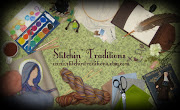


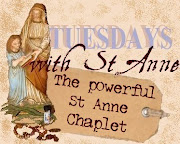















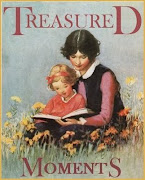







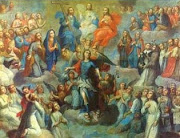
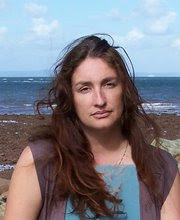




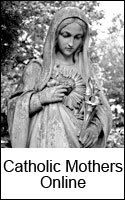











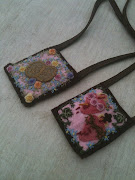


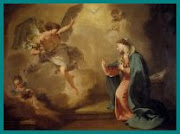









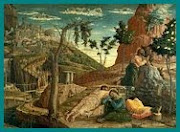




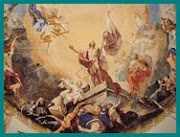


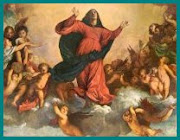
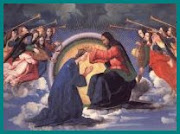




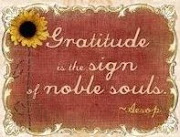






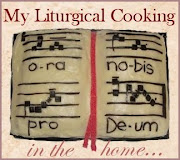

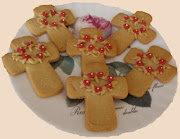

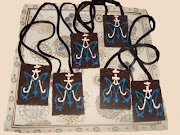
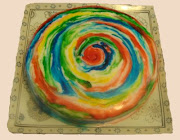


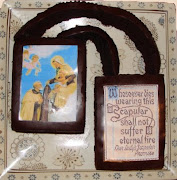

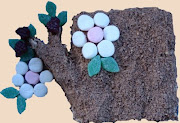


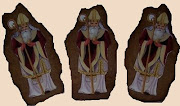

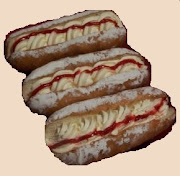





8 comments:
I have been interested in St. Hildegard for a long time. However, at one point I kind of kept my distance, because she seems to have a kind of New Age following. Have you had this experience? Betsy
Wow. I didn't know St Hildegard was a herbalist. I've been trying to help a couple of friends catch a twinkle from God's eye with charting and using natural remedies to sort out problems in their cycle. It worked for me;)
off topic:I don’t normally do this kind of thing-but please would you and anyone else you can get come and leave messages supporting homeschoolers on my blog. We are hoping the more support we get the more we can show the Govt.
Thank you and God bless
Anne I love that painting ! Was it one done by ST.Hidegard ? I need better glasses to make out all the symbols lol
Thanks for the article as I am now looking for black cohash
I'd been trying fennugreek but not much luck .
I sent my friend Mary over too I hope she gets here ;-)
Thanks again
Betsy, I'm so sorry for my delay on replying..I could imagine that she would have a following by some New Agers, but I think it is important we still hold onto to her and her teachings, since she is a Catholic saint. My only experience prior to this article is through my mother, she has a book on her health writings and we used ideas from her book.
Anne, I am so appreciative of your posting these gems!
I've printed this one up for reference!
I'm having trouble leaving a comment, this is my third try.
Anne, I am so appreciative of the information you are sharing. I'm printing this up for future reference! Thank you!
Forgive the tardiness of this comment! The sainted Abbess of Bingen in her time was quite a renaissance woman. Like others of her spiritual & intellectual prowess her words, thoughts and persona are appropriated by less than noble persons. Witness Dan Brown & Leonardo DaVinci. The saints are above such a moral morass. May the life & work of Saint Hildegard always give greater glory to the Living Light of God.
I always read that Hildegard started to have visions by the age of 3 years old (probably understood them when she was much older though) and her mentor was Jutta, but I could be totally wrong and misinformed, it is a lovely blog anyway with a lot of interesting stuff...Best Wishes
Post a Comment